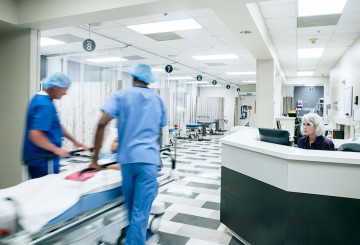Health
AI Models Enhance Early Detection of Sepsis in Children

Sepsis, a life-threatening condition characterized by organ dysfunction due to infection, is a leading cause of mortality among children globally. In a significant advancement towards early diagnosis, researchers from Northwestern University and Ann & Robert H. Lurie Children’s Hospital of Chicago have developed artificial intelligence (AI) models capable of accurately identifying children at high risk for sepsis within a critical 48-hour window. This breakthrough allows for timely preemptive care, potentially saving lives.
The recent study, published in JAMA Pediatrics, marks the first successful application of AI models to predict pediatric sepsis based on the innovative Phoenix Sepsis Criteria. Prior to this research, existing predictive models had not significantly improved the early diagnosis of this dangerous condition. “The predictive models we developed are a huge step toward precision medicine for sepsis in children,” stated Dr. Elizabeth Alpern, professor of pediatrics at Northwestern University Feinberg School of Medicine and division head of emergency medicine at Lurie Children’s. She emphasized the importance of the models’ ability to accurately identify at-risk children without mistakenly flagging those who do not require aggressive treatment.
Research Methodology and Findings
The study utilized data from five health systems participating in the Pediatric Emergency Care Applied Research Network (PECARN). By retrospectively analyzing electronic health record (EHR) data from emergency department visits spanning January 2016 to February 2020, the researchers developed machine-learning models to assess early indicators of sepsis. They subsequently validated these models against data from 2021 to 2022 to determine their predictive accuracy.
The focus was on the first four hours of care, with the aim of predicting outcomes within the next 48 hours. To ensure the study’s efficacy, children already presenting with sepsis upon arrival or within the initial hours of emergency care were excluded. Key predictive features included emergency department triage scores, heart rates, respiratory rates, and pre-existing medical conditions such as cancer.
Future Directions and Implications
Dr. Alpern noted that the research team took care to evaluate their models for potential biases. Looking ahead, she highlighted the need for future studies to integrate EHR-based AI models with clinician judgment for enhanced predictive capabilities. This integration could further improve the accuracy of early sepsis detection, leading to better patient outcomes.
The project received funding from the National Institute of Child Health and Human Development (NICHD) through grant R01HD087363. This support underlines the importance of ongoing research in pediatric health, particularly in developing tools that can transform emergency care practices.
As the medical community continues to explore the intersection of technology and healthcare, the advancements made in predicting sepsis in children illustrate the potential of AI to revolutionize clinical practices, ultimately aiming to reduce mortality rates and improve patient care.
-

 Lifestyle3 months ago
Lifestyle3 months agoLibraries Challenge Rising E-Book Costs Amid Growing Demand
-

 Sports3 months ago
Sports3 months agoTyreek Hill Responds to Tua Tagovailoa’s Comments on Team Dynamics
-

 Sports3 months ago
Sports3 months agoLiverpool Secures Agreement to Sign Young Striker Will Wright
-

 Lifestyle3 months ago
Lifestyle3 months agoSave Your Split Tomatoes: Expert Tips for Gardeners
-

 Lifestyle3 months ago
Lifestyle3 months agoPrincess Beatrice’s Daughter Athena Joins Siblings at London Parade
-

 World2 months ago
World2 months agoWinter Storms Lash New South Wales with Snow, Flood Risks
-

 Science3 months ago
Science3 months agoTrump Administration Moves to Repeal Key Climate Regulation
-

 Business3 months ago
Business3 months agoSoFi Technologies Shares Slip 2% Following Insider Stock Sale
-

 Science3 months ago
Science3 months agoNew Tool Reveals Link Between Horse Coat Condition and Parasites
-

 Science2 months ago
Science2 months agoSan Francisco Hosts Unique Contest to Identify “Performative Males”
-

 Sports3 months ago
Sports3 months agoElon Musk Sculpture Travels From Utah to Yosemite National Park
-

 Science3 months ago
Science3 months agoNew Study Confirms Humans Transported Stonehenge Bluestones








